Meet the F3300 3D Printer from Stratasys
The newest FDM 3D Printer from Stratasys is here: the F3300! While the basic concepts of FDM 3D printers haven't changed much in the last 35 years, the processes to implement them have. In this article, see what distinguishes this newest addition to Stratasys' FDM lineup.
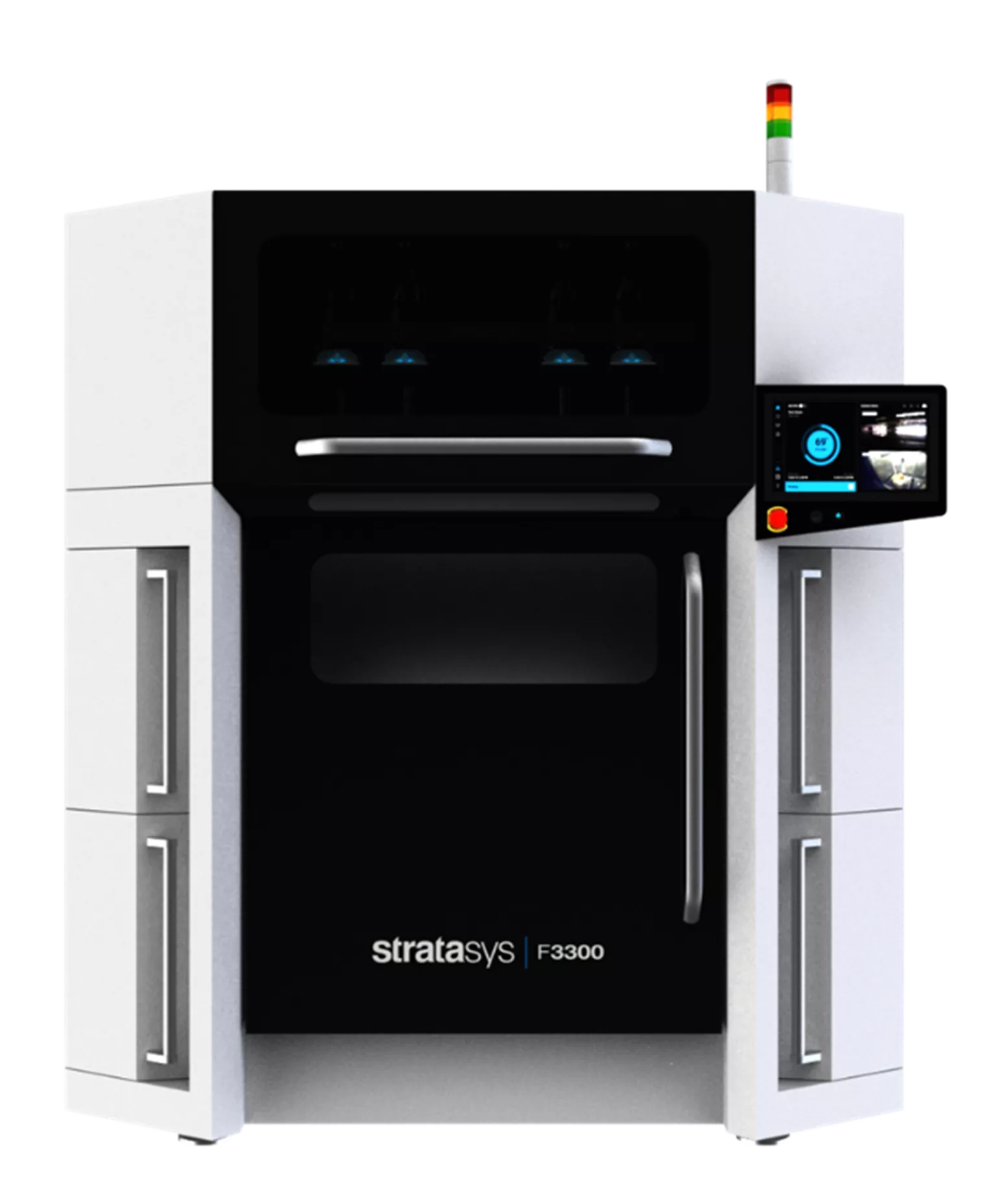
What makes this printer different, not just new?
The F3300 was designed and built for manufacturing rather than prototyping, which has traditionally been the primary application for this technology. Along with a slew of new patents, a lot of thought has gone into the ease of use for printer operation. One of the most hands-off and time-saving innovations is the new automatic calibrations, which alone saves operators time by not having to run and re-run manually-read calibrations.
The F3300 has new heads, tips, and extruder motors and features an Automatic Tool Change extruder system, new material spools, and drying bays. Additionally, integrated monitoring systems, faster hands-on processes, and an easier-to-use interface are all part of the F3300, making it an industry stand-out.
Current Stratasys FDM users will notice that the F3300 uses all metric measurements first (a helpful change since we often use microns to measure accuracy). This will be the beginning of a shift for Stratasys – and it will fit in well with the rest of the industry.
Below is a brief overview of some of the updates for speed and saving increases.
|
Up to 2X Faster |
50% More Reliable |
25% Increased Accuracy & Repeatability |
Up to 45% Lower Cost Per Part |
|
Increased Gantry Speed |
Advanced Control System |
Auto-Calibration |
2X Faster Print Speed |
|
Faster Extrusion Rate |
Redundant Extruders |
Smart Extruders |
Higher Part Yield |
|
Auto-Calibration |
Health Monitor |
Linear Motors |
Lower Material Cost |
|
Automatic Tool Changer |
Integrated Material Dryers |
Advanced Control System |
Reduced Labor |
(Statistics according to stratasys.com)
Upper Gantry and Head Assemblies
Modifications to the F3300 3D printer are primarily focused in the upper gantry and the way the material is extruded. Components typically found in CNC machines were selected in order to move the print head around faster and more accurately. In fact, the F3300 has an entirely new head and extrusion system, which enables automatic tool changes. These robust components and movement speeds are only the first of several changes that help it achieve 2X faster printing (compared to the F900).
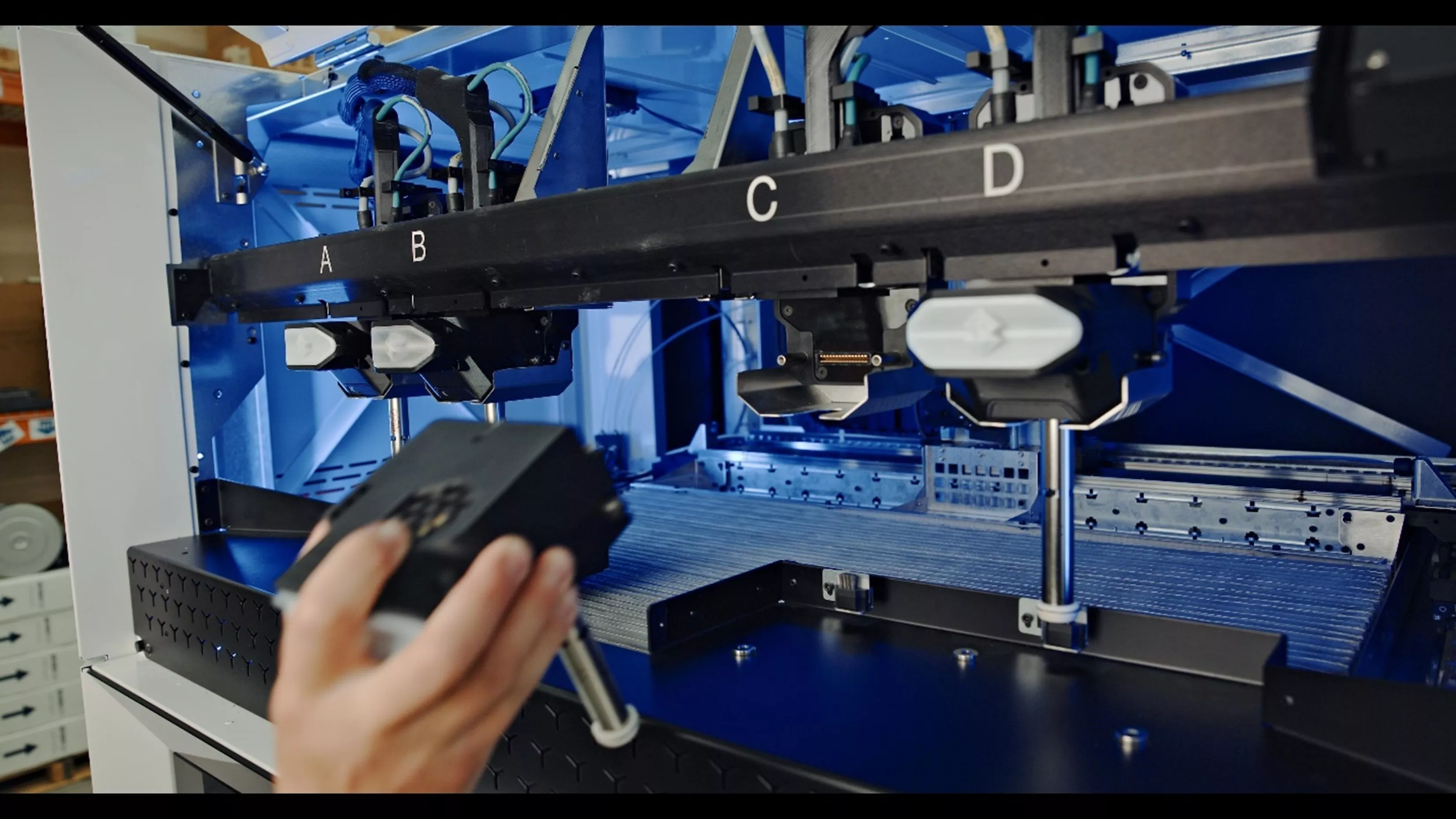
The print head system is now modular, with multiple interchangeable heads in the automatic tool changer, and the extruding units themselves. This incorporates the best of the F123 and Fortus worlds; from the enclosed design of the F123 series print heads, as well as replaceable hot ends (or "tips" as they have been known in the Stratasys Fortus printers), and now even modular extruder drives.
With the F3300, no longer is it necessary to replace the entire head for a clogged tip. The extruder drives have lifespans independent from the tips, requiring less frequent replacement. They also include colored lights in the front to show the status of each extruder at a glance, without the need to consult the control screen.
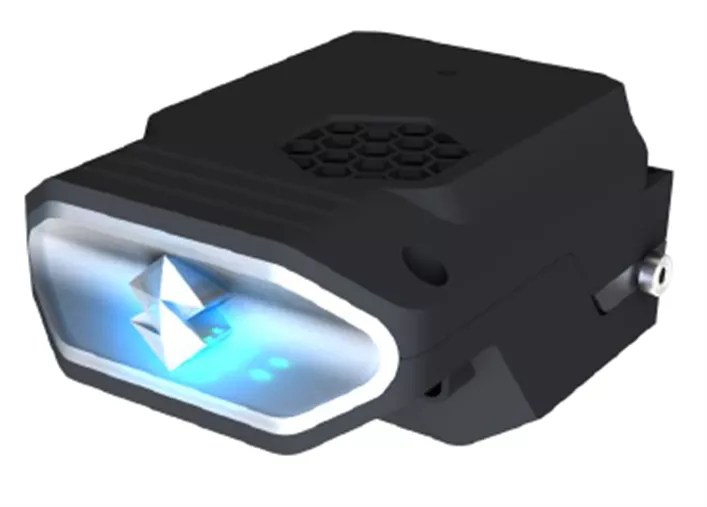
As with the Fortus line, F3300 hot ends are available in multiple diameters, as well as hardened options for abrasive fiber-filled materials. A hot end can be swapped as needed (for a different type of material, layer resolution, or end of life), independent of its extruder drive. The new design also heats more effectively, allowing increased material flow rates, and faster print times.
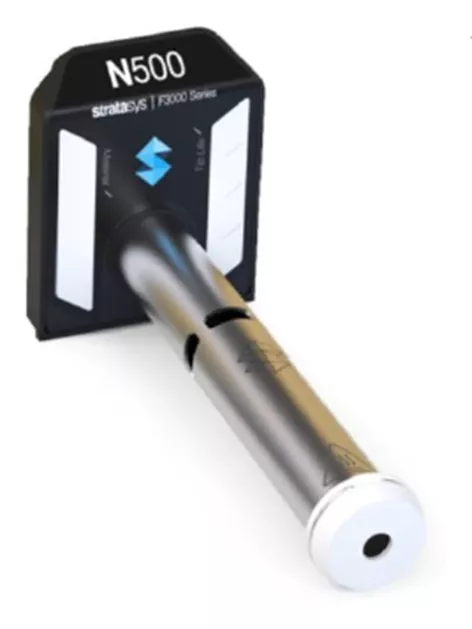
The hot end attaches to the extruder base, which all connects to the tool base, which supplies power, temperature control, and material to the assembly. This can speed up material changes and printing speed, as the extruders can independently heat up and cool down as needed.
In use, the head assembly grabs the tool base (with its preheated hot end) and lowers the extruder into the print area. This innovation reduces the material change time from model to support (and back), from about a minute to just 15 seconds - a 45-second savings in print time per layer on every model.
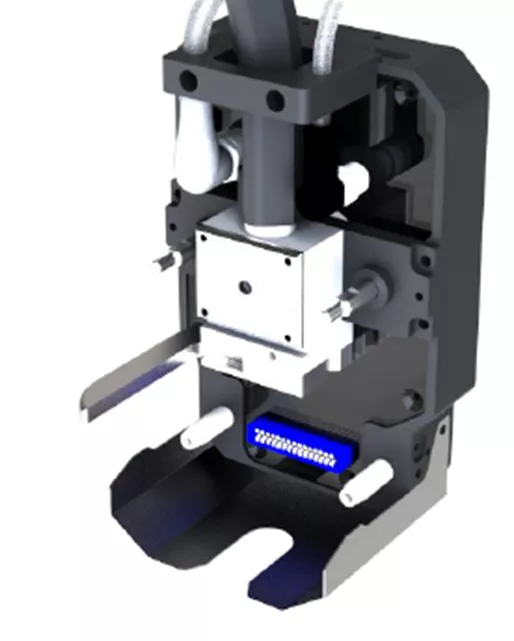
The new head and extruder assembly can also translate in the Z axis. This means the lightweight head assembly can perform quick motions during travel moves and some layer changes while the massive build surface moves in larger increments.
Material Spools, Storage, & Assignments
One of the most significant changes in regards to materials is the larger spools - also, they are now just spools (like the F170, F370, and F123CR printers), not cartridges. They also have more material per spool: 4,100 cubic centimeters (250 cubic inches) versus the 92 or 180 cubic inches of the metal Fortus canisters. More material per spool means fewer material changes and less space for inventory.
With the F3300, each individual material bay is actively dried, increasing the life and efficacy of materials. This will extend the life of an open material, and even help restore partially-used spools that are returned to the printer from the shelf. (Note: It is still recommended to store open spools in dry, sealed storage containers.) This new addition is especially helpful for moisture-hungry Nylon 12CF.
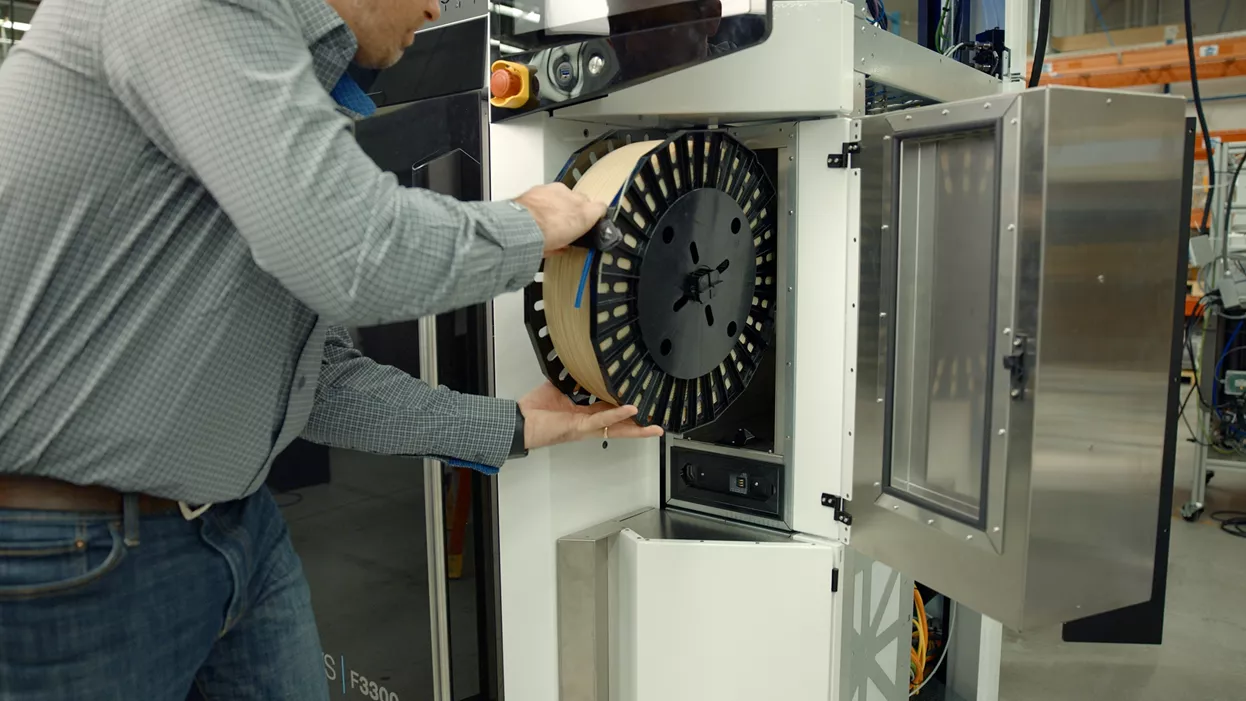
Lastly, each material bay feeds directly to one of the four print heads, meaning there is no chance of auto-change failures. In the event that material runs out mid-print or if a tool head clogs, the system will automatically change to another tool head of the same material type.
This setup also allows for flexibility for users. Rather than being locked into a two-model/two-support bay configuration, up to three model spools and one support spool can now be loaded when little support is needed for a build, or vice versa. It also allows different colors of ASA to be used for multi-color prints, which is truly exciting.
At the launch of the F3300, available materials are the four most common to the manufacturing process: ASA, PC, ULTEM 9085®, and Nylon 12CF. But stay tuned - more are on the way!
Designed with manufacturing in mind
All in all, there have been quite a few changes and improvements with the F3300 3D printer. Having worked with Stratasys 3D printers for more than 15 years, I can say firsthand that these time-saving and materials improvements are outstanding. In addition, the smaller changes to help manufacturing specifically will easily justify the use of this printer on any factory floor that uses additive manufacturing to create parts at any stage of production.
Interested in learning more? Please contact us for more information about the F3300 or Fused Deposition Modeling 3D printing technology.
3D Printing as a Service
GoEngineer offers comprehensive 3D printing services across multiple U.S. labs, equipped with cutting-edge Stratasys FDM, PolyJet, Stereolithography, and SAF technologies for 3D printed prototypes or production parts. Request your quote online today!
More 3D Printing News
Scan-to-Print Workflow: Tips to Optimize 3D Printed Food Models
GoEngineer 3D Printing Services: Stronger than Ever
Proven Performance: The Stratasys FDM Advantage
Introducing GrabCAD Control for 3D Printer Management
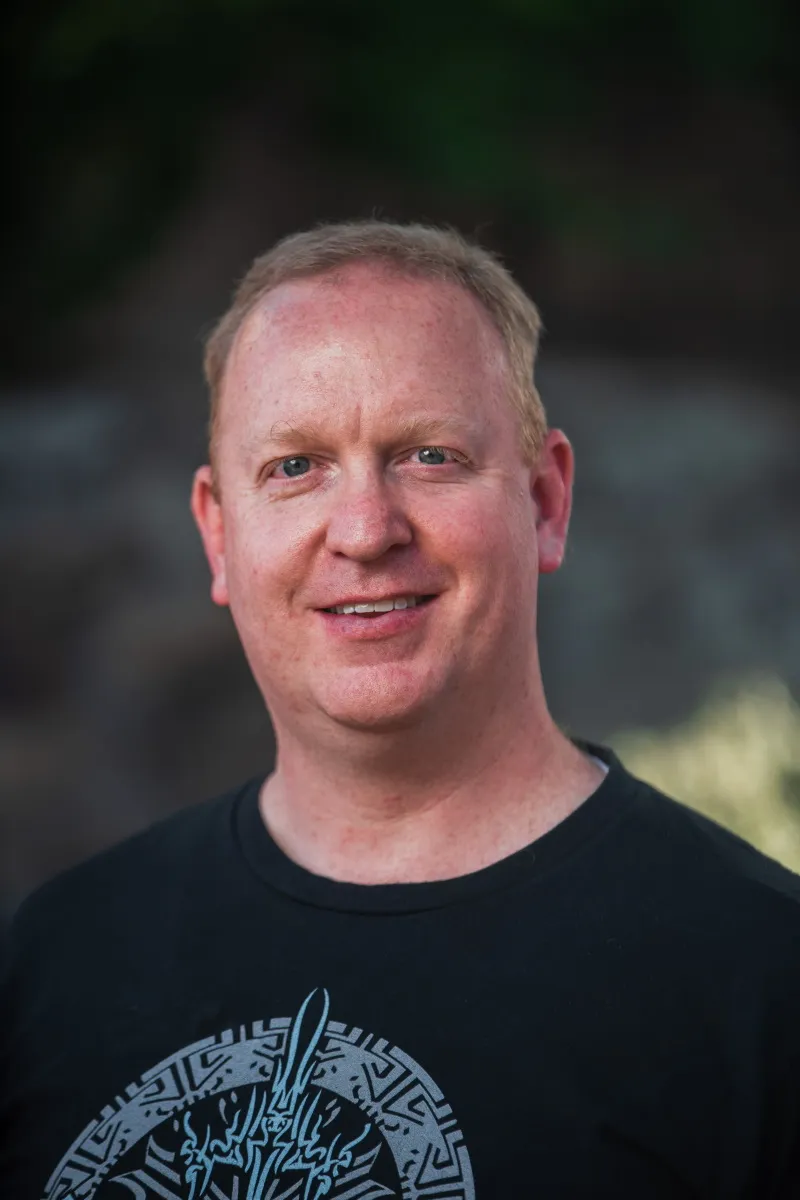
About Joseph Miller
Joseph Miller is a 3D Printer Technical Support Specialist based out of Atlanta, Georgia. He earned his Bachelor’s degree from Brigham Young University in 2008 and a Master’s degree from Capella University in 2013. Joseph has been working in the Additive Manufacturing industry for over 12 years and has been part of the GoEngineer family since 2019.
Get our wide array of technical resources delivered right to your inbox.
Unsubscribe at any time.
